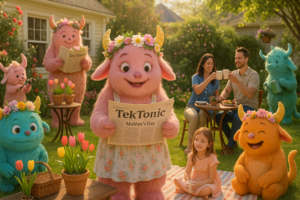Welcome back. We hit another week of incredible AI and Tech news, and I can’t wait to share what we discovered. This week, we’ll learn about significant AI collaborations, discuss emergent regulatory efforts, and spotlight advancements in robotics, cybersecurity, healthcare, and more. Let’s dive in!
My favorite news of the week has to be the announcement of OpenAI’s Deep Research Agent. OpenAI’s announcements overshadowed Google’s Gemini Flash 2.0 and Pro 2.0 releases because of its impact on basic research. While not explicitly stated, this new Deep Research tool is based on OpenAI’s yet-to-be-release O3-pro model, a much more powerful version of their released o3-mini announced last week. The reviews of this new agent are mostly positive as it excels at literature reviews, academic research, medical research, market analysis, and scientific studies. Notably, it doubled the best score on the awfully named benchmark Humanities Last Exam from 13% to 26%.
One quote from Sam Altman, CEO of OpenAI, was an eye-opener. He said in an interview this week,
“I cannot overstate how much progress we’re going to make in the next 2 years. We know how to improve these models so, so much… the progress I would expect from February of ’25 to February of ’27 will feel more impressive than February of ’23 to February of ’25.”
In other news, SoftBank and OpenAI revealed plans to invest heavily in Cristal Intelligence, aiming to automate enterprise workflows and accelerate AI agents in Japan. Meanwhile, DeepSeek-R1 raised security concerns when researchers discovered that the model could generate harmful content more easily than others. Another notable story came from OpenAI about building an AI device in partnership with Jony Ive to potentially replace smartphones. From the user perspective, Lyft is integrating Anthropic’s Claude AI into customer support, demonstrating how generative AI is reshaping everyday services.
Significant strides are being made in AI’s core research as Anthropic deployed Constitutional Classifiers to bolster model safety and reduce jailbreak attempts. On the data front, Prime Intellect unveiled SYNTHETIC-1, a dataset of 1.4 million curated tasks to train reasoning models in math, coding, and other STEM fields. Taking a more architectural approach, PAI3 introduced a decentralized AI network that operates without large-scale cloud servers, indicating a future with more distributed AI systems.
Major tech firms continue to realign their workforce and investments to stay ahead of AI trends. Microsoft and Salesforce announced strategic layoffs even as they hired specialized AI talent. Amazon aims to save up to $10 billion by 2030 through advanced robotics, signaling how automation can significantly impact bottom lines. OpenAI’s alliances (with SoftBank, Kakao-Korea, and others) demonstrate continued interest in corporate AI solutions and expansion into new markets.
The intersection of AI with content creation and distribution attracted attention when ByteDance unveiled a model that generates hyper-realistic video content, raising excitement and deepfake concerns (Check this out). Meanwhile, Meta faced a copyright infringement lawsuit after claims surfaced that it allegedly used pirated books to train its AI. Adding to the marketing buzz, ChatGPT’s Super Bowl ad showcased how generative AI is becoming mainstream enough to feature in prime-time commercial spots.
Governments are responding to AI’s transformative power by rolling out specific regulations. The UK introduced new laws targeting the creation and distribution of AI-generated child abuse images, marking a global first in this field. On the copyright side, the US Copyright Office reiterated that purely AI-generated art, created from text prompts alone, cannot receive standard copyright protections, signaling legal complexities ahead for creative industries.
As AI grows in sophistication, security remains a top concern. Cisco’s research on DeepSeek R1 revealed potential vulnerabilities that jailbreaking can exploit. Similarly, Anthropic tested new filter systems by inviting users to challenge its constitutional safeguards. Both cases highlight the industry’s efforts to reduce potential harms from next-gen language models.
The race to offer powerful yet user-friendly AI tools continues. OpenAI’s Deep Research provides autonomous, citation-based web investigations for professionals, while Opera Air uses a mindfulness approach to browsing, bundling relaxing exercises and calming design elements. OpenAI’s o3-mini meanwhile caters to STEM and coding tasks at faster speeds, and Warp Terminal users can now access DeepSeek R1 AI for more efficient Linux commands and automated script creations. Google’s Gemini 2.0 also launched multiple variants, focusing on code generation and enterprise usage, and ChatGPT’s web search no longer requires sign-in. Finally, Grok from xAI introduced new personalization features, hinting at a future where AI assistants adapt deeply to individual user styles.
Public sector projects, defense collaborations, and new regulations demonstrate AI’s wide-scale adoption. The US Air Force continues to invest in generative AI for defense, though many details remain classified. Meanwhile, DOGE is building an AI chatbot to analyze government contracts, potentially boosting worker productivity. New York’s regulatory moves on AI usage reflect a balancing act between innovation and control. OpenAI’s Stargate project has broadened its site searches for large-scale data centers across the US, underscoring federal-level support for AI growth.
In robotics, AI-driven automation is reshaping industries, from factories to battlefields. Figure AI aims to ship 100,000 humanoids to meet labor and manufacturing demands, while experts at Medlab Middle East highlighted the role of automated systems in laboratories. On a global scale, Ukraine is embracing robotic vehicles in defense operations, reflecting how advanced tech can preserve human lives. Notably, Figure AI parted ways with OpenAI’s model and teased a new, proprietary humanoid AI system launching soon.
In health tech, AI-assisted clinical solutions continue to attract significant funding. Radiology-focused Rad AI secured $60 million in a round led by prominent investors, reflecting the growing confidence in AI to expedite diagnoses and improve patient outcomes.
Various startups achieved significant milestones and received news of funding. Data-training firm Turing tripled revenue to $300 million, demonstrating the need for specialized annotation and curation services in AI. Meanwhile, Cognida.ai raised $15 million to expedite enterprise AI deployment and reduce adoption hurdles. SoftBank is reportedly investing $40 billion in OpenAI, potentially valuing the latter at $300 billion. Finally, DeltaGen in Seattle gathered $1.2 million to simplify the integration of generative AI into complex corporate workflows, reflecting a market hungry for streamlined solutions.
Wrapping up with consumer-facing AI news, Amazon reportedly plans to introduce a new generation of its Alexa assistant with advanced AI features at an upcoming event next week.
That is it. Stay tuned for more news next week. I APPRECIATE ALL THE READERS. Help spread the word. I put these newsletters together so productive humans like you can stay on top of the latest AI stories shaping our world.
If you like these weekly tech news reports, subscribe to get notified of new editions and updates. For daily updates, check out our news page. For a more in-depth analysis of the week’s news, sign up for our free weekly newsletter to the right of the daily news, or follow me on Twitter or YouTube.



